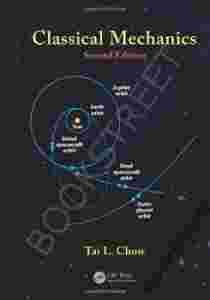|
Classical Mechanics, Second
Edition presents a complete account of the
classical mechanics of particles and systems for physics
students at the advanced undergraduate level. The book
evolved from a set of lecture notes for a course on the
subject taught by the author at California State
University, Stanislaus, for many years. It assumes the
reader has been exposed to a course in calculus and a
calculus-based general physics course. However, no prior
knowledge of differential equations is required.
Differential equations and new mathematical methods are
developed in the text as the occasion demands.
The
book begins by describing fundamental concepts, such as
velocity and acceleration, upon which subsequent
chapters build. The second edition has been updated with
two new sections added to the chapter on Hamiltonian
formulations, and the chapter on collisions and
scattering has been rewritten. The book also contains
three new chapters covering Newtonian gravity, the
Hamilton-Jacobi theory of dynamics, and an introduction
to Lagrangian and Hamiltonian formulations for
continuous systems and classical fields. To help
students develop more familiarity with Lagrangian and
Hamiltonian formulations, these essential methods are
introduced relatively early in the text.
The topics
discussed emphasize a modern perspective, with special
note given to concepts that were instrumental in the
development of modern physics, for example, the
relationship between symmetries and the laws of
conservation. Applications to other branches of physics
are also included wherever possible. The author provides
detailed mathematical manipulations, while limiting the
inclusion of the more lengthy and tedious ones. Each
chapter contains homework problems of varying degrees of
difficulty to enhance understanding of the material in
the text. This edition also contains four new appendices
on D'Alembert's principle and Lagrange's equations,
derivation of Hamilton’s principle, Noether’s theorem,
and conic sections.
|
|

